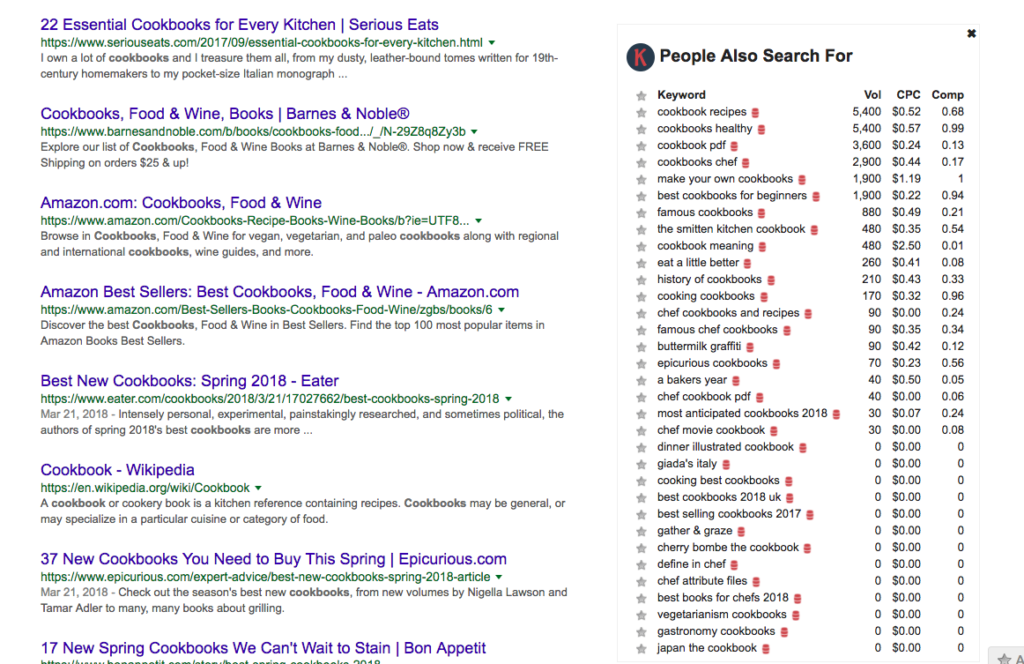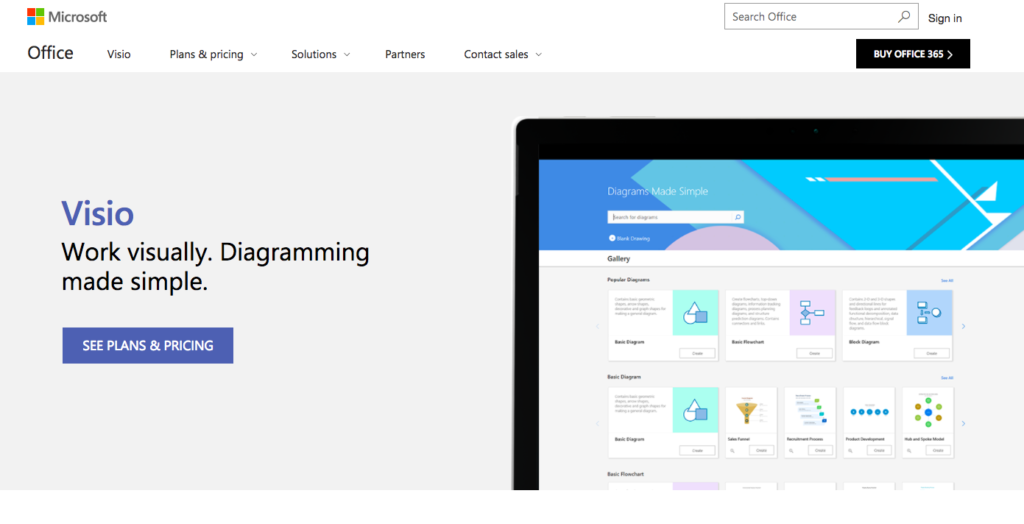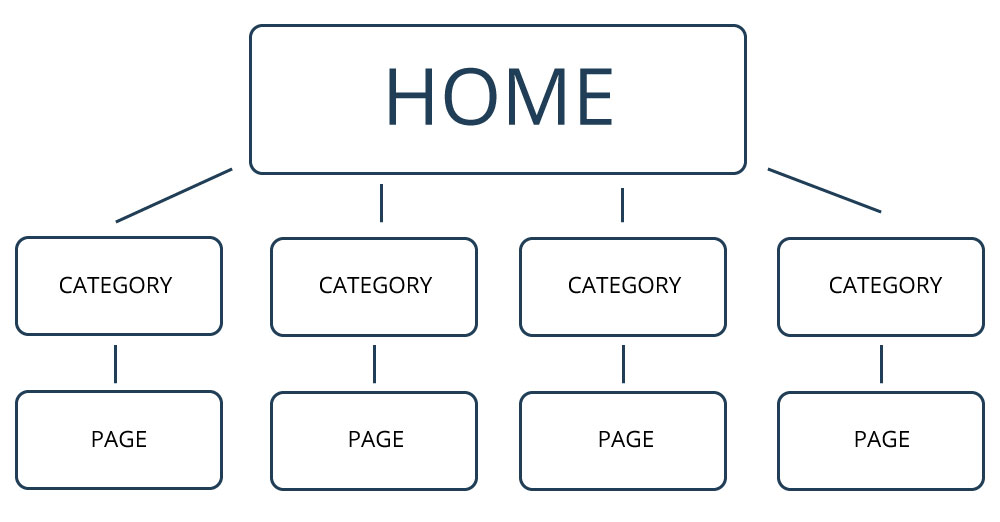
Having a good SEO site structure is one of the crucial factors that influence ranking on search engines. This article offers a few tips that will help you build the best site structure for SEO – a site that gets easily indexed by search engine crawlers but is also appealing to human users.

Why is SEO Site Structure Important?
Importance for users
A good SEO site structure equals a good UX. Users want pages that are not cluttered, easy to navigate and have a logical flow of information. Simply put, users want pages where they can easily find what they’re looking for.
If your website is appealing to human users, it will also be appealing to search engine bots. Google takes into account searches, CTRs, and the time users spend on your site to rank your website. If users like your website’s structure, they’ll stay longer and come back often, which will eventually result in improved rankings.
Importance for ranking
A good website structure is easier to crawl. Search engine bots can’t find everything on your website automatically. In fact, if your website’s structure is poor, some pages may remain unindexed. Providing a good site architecture will make it easier for crawlers to find and analyze everything, which will result in better rankings.
How to Build the Best Site Structure for SEO
#1 Plan your site’s content
Before you begin building the site’s structure which consists of main categories and subcategories, you need to think about what these elements will actually cover, i.e. determine the content topics.
How to select the right content themes for your website? By simply typing simple keywords in Google search. For instance, if your website is selling cookbooks, type ‘cookbooks’ in the search bar.

We use the extension ‘Keywords Everywhere’ which suggests related searches with this keyword, such as ‘cookbook recipes’ and ‘cookbook healthy’. These could be two possible categories/themes on your site.
Another way to find topics is to check Q&A sites such as Quora. The keywords generated this way reflect real users’ problems and emotions, which makes these sites great sources.
After you’ve established the content topics your site will be covering, it will be easier to draw the hierarchy and structure.
#2 Plan before you build
Before you start building your website, you need a plan the structure and hierarchy. Site hierarchy refers to the way information is organized. It is the foundation of your site that will later serve as a base for navigation and URL structure.
You can draw the site structure using spreadsheets, whiteboards, or diagramming programs such as OmniGraffle and Visio.

#3 Make it logical
No matter how tempted you might be to add unique ways of navigation or mind-blowing designs to your site, try not to complicate things. Simplicity is the key to building a good site. A simple, logical structure is best for both users and crawlers.
Here are a few super-simple tips to serve as a foundation to build the best site structure for SEO:
- Categories: The number of main categories should be kept under 7. In addition, make sure that each category addresses one section of the website.
- Subcategories: The number of subcategories in each section should be approximately equal. Furthermore, make sure each subcategory is relevant to the category it belongs to. If the number of subcategories in one main category is four, while in another main category that number is as high as eleven, you might want to rethink the organization and try to balance things.
- Tags: Besides categories, which compose a pyramid-like site structure, you can also use tags. The difference between categories and tags is in their structure – the former have a hierarchy, which is not the case with the later. However, be careful to limit the number of tags. You can’t add a new tag for every new post; make sure to use each tag at least twice and that the tags refer to posts that belong to the same broad theme.
Finally, ensure that the tags are easily accessible to users. They’re usually placed in a sidebar or at the bottom of articles. Besides helping users to navigate easily around your site, tags are also favored by Google.

Figure 1 Basic website layout Credit: konstructinteractive.com
#4 Build a good URL structure
The next important element in building the best site structure for SEO is the URL structure. Since the URL structure follows the site’s hierarchy, if your hierarchy is simple and logical, there should be no problems with this step.
Make sure to avoid symbols and use words in the URLs. Ideally, you should include the selected keywords in each URL. For instance, a restaurant that is located in Soho would have a location page with the following URL: www.masalazone.com/locations/soho/
#5 Use a simple coding language
Even though there is a great number of sophisticated coding languages out there, make your choice with simplicity in mind once again.
More complicated options like JavaScript, Ajax, or Flash, limit the search engine bots in their attempts to cover the whole site hierarchy. Stick to simple coding languages such as CSS and HTML to deliver the best user experience and make it easier for the crawlers to do their job.
#6 Make the structure flat
What is a flat (or shallow) page structure? A flat site is a site that requires less than four clicks to go to every page as opposed to a deep site which requires many clicks to reach every page.
In other words, a flat structure means simple navigation, i.e. it makes it possible for users to find what they want fast. Make all your important info, such as landing pages where users buy a product, visible ‘on the surface’ instead of burying it deep. Once again, if users are happy, then search engine bots will be happy as well.
#7 Cornerstone content
The term ‘cornerstone content’ refers to pages that contain critical content, i.e. the most important pages on the site. Corner content is a great tactic to attract potential customers and increase the traffic as they reflect your brand and company in the best way.
Because of this, cornerstone content should be placed high in the website structure. The best strategy is to locate cornerstone articles in the top three or four pages on your website. These are the pages that visitors would read in order to find out more about your business. Tag pages and category pages can also be used for this purpose.
No matter which of these options you decide to go with, you need to make sure that the homepage links to the cornerstone articles. You also need to ensure you have great content. These pages should offer captivation introduction and overview that will make the users continue reading other articles on your site.
#8 Build a rich internal link network
Basically, there should be a link from and to every page on your site.
Why is internal linking so important? Internal links help users navigate your site but they also help distribute link juice. They’re crucial for creating a consolidated site structure. This way, search engine crawlers will be aware of the site’s hierarchy, i.e. which pages are important and how to reach them. Bottom line is the more internal links your website has, the better.
Still, don’t go overboard with internal links per page. Limit the number of internal links on a single page by linking to pages with similar topics. The rule of thumb here is that the fewer internal links there are on a single page, the more link quality and equity the page will have.
Another important factor when it comes to internal linking is the anchor text. First, it should be placed in a way that it will make users click. Next, make sure that the most anchor texts contain the keyword you’re ranking for (about 50% of all anchor texts should contain the keyword; the rest of them can be branded and generic anchors).
For example, we have our article on SEO Strategy titled SEO Strategy 101 – Everything You Need to Know in Under 10 Minutes. The anchor text uses the keyword in a way that isn’t spammy, entices the reader to click as it is highly related to the topics discussed in this article, and if you a user visits that links, we believe they will be very satisfied with the content and stick around on the page to read the entire article.
Using internal links like this can help keep visitors on your website longer and provide visitors with more content that may help them.
#9 List main pages in the top header
List your site’s main pages (categories) in the top header. Keep things simple; avoid adding any other elements (such as subcategories) in order to prevent unnecessary cluttering and distractions.
Using a top header to list your main pages is far simpler and more effective than disappearing or drop-down menus. Even though these may look better and more original, they don’t boost SEO. Same counts for navigation based on images. Using links with suitable anchor texts is far more effective for enhancing the site’s SEO.

Conclusion
Building the best site structure for SEO requires careful planning, organization, and design. The ideal site structure should allow users to find the info they’re looking for easily in order to prevent them from bouncing. In addition, a good site structure also helps Google crawlers to reach and analyze your site’s content more efficiently, which eventually translates into better rankings.

